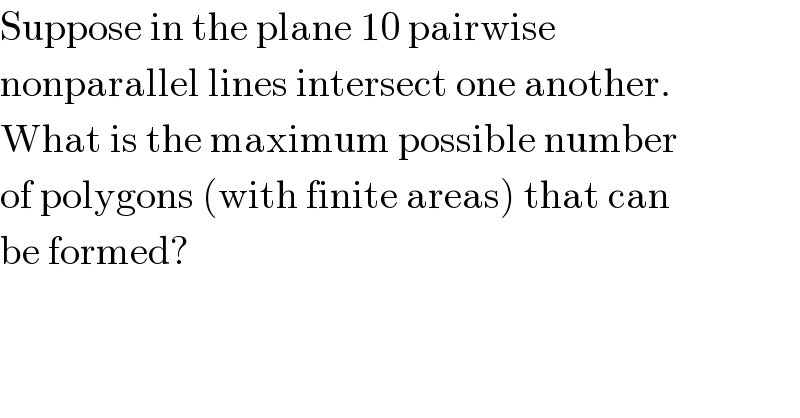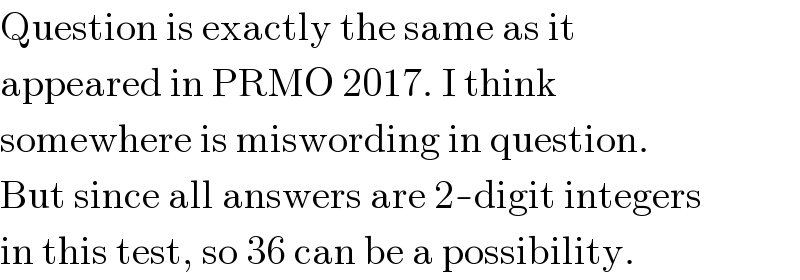
Question and Answers Forum
Question Number 21097 by Tinkutara last updated on 12/Sep/17

Answered by Tinkutara last updated on 15/Sep/17
![Let us assume a_n represents the number of regions of plane formed by pairwise nonparallel lines. Then T_1 =2,T_2 =4,T_3 =7,T_4 =11 and so on. Let S=2+4+7+11+...+T_n S= 2+4+7+11+...+T_n 0=2+[2+3+4+...(n−1)terms]−T_n T_n =1+((n(n+1))/2) ∴ T_(10) =1+((10×11)/2)=56 Seeing the number of nonoverlapping polygons formed by upto 4 lines, we get number of polygons, N=T_n −2n. ∴ Number of polygons formed by 10 nonparallel lines = 56−20=36.](Q21198.png)
Commented by Tinkutara last updated on 15/Sep/17

| ||
Question and Answers Forum | ||
Question Number 21097 by Tinkutara last updated on 12/Sep/17 | ||
 | ||
Answered by Tinkutara last updated on 15/Sep/17 | ||
![Let us assume a_n represents the number of regions of plane formed by pairwise nonparallel lines. Then T_1 =2,T_2 =4,T_3 =7,T_4 =11 and so on. Let S=2+4+7+11+...+T_n S= 2+4+7+11+...+T_n 0=2+[2+3+4+...(n−1)terms]−T_n T_n =1+((n(n+1))/2) ∴ T_(10) =1+((10×11)/2)=56 Seeing the number of nonoverlapping polygons formed by upto 4 lines, we get number of polygons, N=T_n −2n. ∴ Number of polygons formed by 10 nonparallel lines = 56−20=36.](Q21198.png) | ||
| ||
Commented by Tinkutara last updated on 15/Sep/17 | ||
 | ||